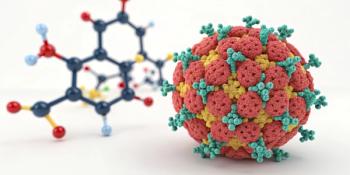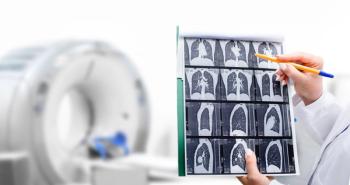
The application of pharmacodynamics in the optimization of antibiotic therapy
Antibiotic therapy has undergone enormous changes since the discovery of penicillin by Sir Alexander Fleming in 1928. 1. Today, clinicians face increasing reports of antibiotic resistance. Optimizing antibiotic regimens can maximize effectiveness and minimize adverse effects while decreasing the likelihood of the development of resistance. The task of designing optimal antibiotic dosing regimens incorporates pharmacodynamics (PDs), pharmacokinetics (PKs), and microbiological principles. PKs consist of absorption, distribution, metabolism, and excretion, with these parameters reflecting drug exposure over time. The relationship between drug exposure and the physiologic effect of the drug encompasses the principles of PDs. With antibiotic therapy, PDs incorporate exposure to the antibiotic and antimicrobial effect. The intricate relationship between these principles enhances the understanding of the efficacy of antibiotic therapy.
This paper will focus on reviewing the use of PD principles in antibiotic research, in the optimization of dosing regimens, and in the prevention of resistance. Applications will be illustrated with clinical examples in humans. While important, toxicity considerations are beyond the scope of this paper and have received significantly less study in humans. Finally, this review will discuss how the practicing clinician can use PD principles to optimize patient therapy.
PRINCIPLES OF PHARMACODYNAMICS IN ANTIBIOTIC THERAPY Antibiotic PDs are an intricate relationship between microbiology and PKs.2 The microbiology component is the antimicrobial effect measured by the susceptibility of antibiotics against microorganisms. In vitro measures of the minimum inhibitory concentration (MIC) or minimum bactericidal concentration (MBC) represent the degree of antimicrobial susceptibility of a pathogen against an antibiotic. MIC is defined as the lowest concentration of the antibiotic required to inhibit the growth of the bacterium. This measurement is expressed as a concentration, mg/mL, and described by the determining method (ie, the broth dilution, agar dilution, or gradient diffusion) or reference to the published performance method.3 Likewise, the lowest concentration of the antibiotic required to kill the bacterium is the MBC. Although antibiotics may be classified as bacteriostatic or bactericidal, all antibiotics are bacteriostatic but not necessarily bactericidal.4 For this reason, MIC defines susceptibility in the clinical setting.
Antibiotic PKs affect drug exposure. The extracellular distribution of β-lactams is passive, but being hydrophilic, the β-lactams do not penetrate cells, thus resulting in an overall low tissue concentration.7 Therefore, extracellular bacterial infections (such as common respiratory tract infections) are exposed to concentrations reflected by serum concentrations.8 In addition, β-lactams are often highly protein bound.6 Therefore, free drug serum concentration is the best surrogate marker when studying PDs of β-lactams in extracellular infections. Similar to b-lactams, aminoglycosides also penetrate cells poorly due to their hydrophilicity, large size, and polycationic charge.9 This results in low tissue aminoglycoside concentrations, and therefore, serum concentrations are appropriate surrogate markers. Although serum concentrations are used to predict efficacy, caution should be taken in extrapolating data to infections in specialized tissues in which the prediction of efficacy may be inaccurate.
Applying PDs using concentration of antibiotics at the site of infection (ie, what the bacteria are exposed to) would give the most accurate prediction of efficacy. Fluoroquinolones have a large volume of distribution, distributing well into tissues producing high concentrations extracellularly and intracellularly.10 Concentrations in lung tissues through epithelial lining fluid and in phagocytes is reported to be higher than concurrent serum concentrations.7 Therefore, using serum concentration in PD studies may be unreliable in predicting efficacy. Likewise, the newer macrolides, clarithromycin and azithromycin, distribute well into tissues and show greater tissue penetration compared to erythromycin.11 Azithromycin concentrates 10 to 100 times greater in tissue than in serum12 and has longer retention in cells and slower release compared to clarithromycin and erythromycin.13 Therefore, use of serum concentrations as a surrogate marker in PD studies and in in vitro susceptibility data may not reflect true efficacy for azithromycin.
Principles in microbiology and PKs encompass PDs to assess the efficacy or outcome of antibiotics. PD indices such as Cmax/MIC, AUC/MIC, and time above the MIC (T>MIC) characterize antibiotics by their killing activity when assessing efficacy. Although the availability of different classes of antibiotic therapy has grown tremendously, the pattern of bacterial killing is still divided into only two groups: time-dependent killing or concentration-dependent killing, as shown in Table 1. Time-dependent killing agents are characterized by the PD indice T>MIC, while concentration-dependent killing agents are characterized by Cmax/MIC or AUC/MIC (Figure 1). No single PD index is appropriate to optimize therapy for all antibiotics.14
Newsletter
Get the latest industry news, event updates, and more from Managed healthcare Executive.


















































